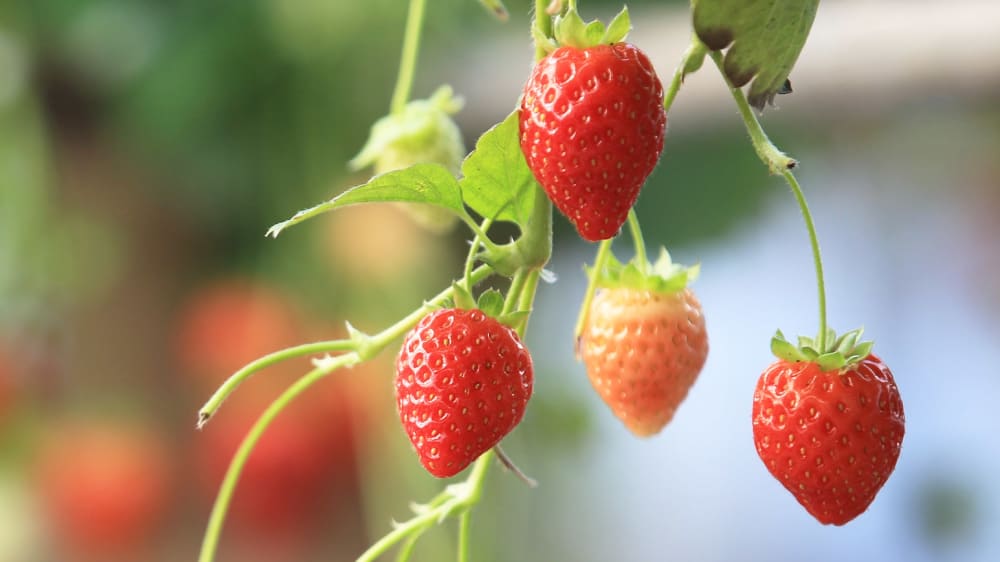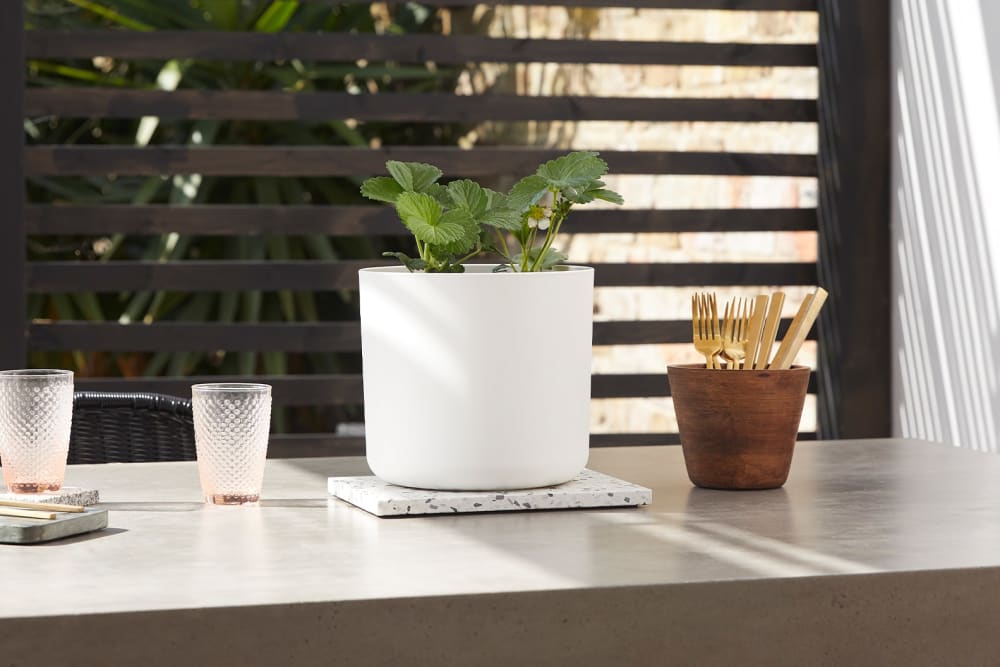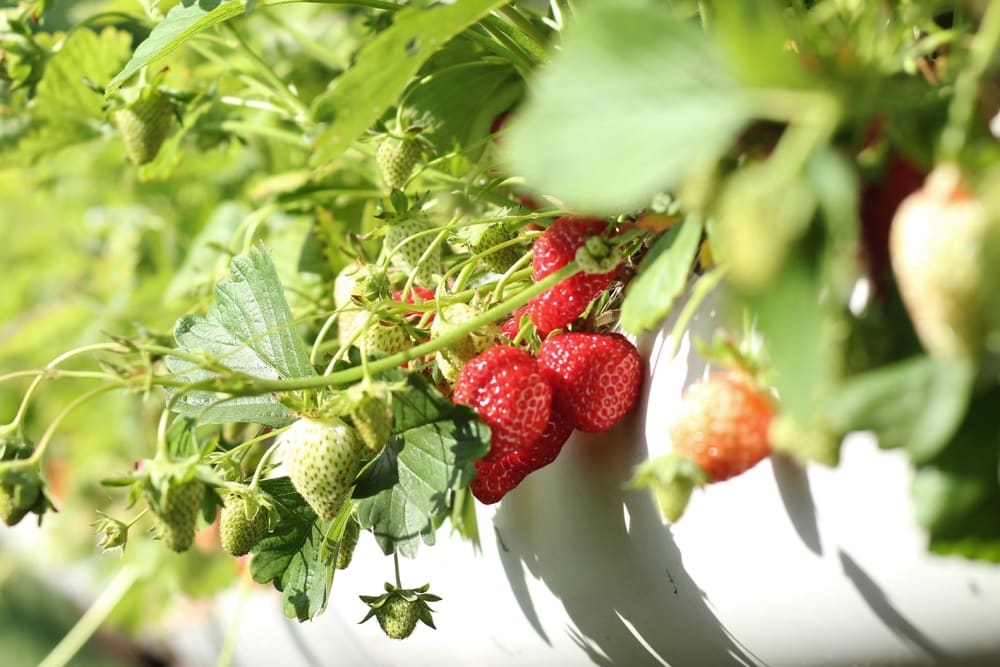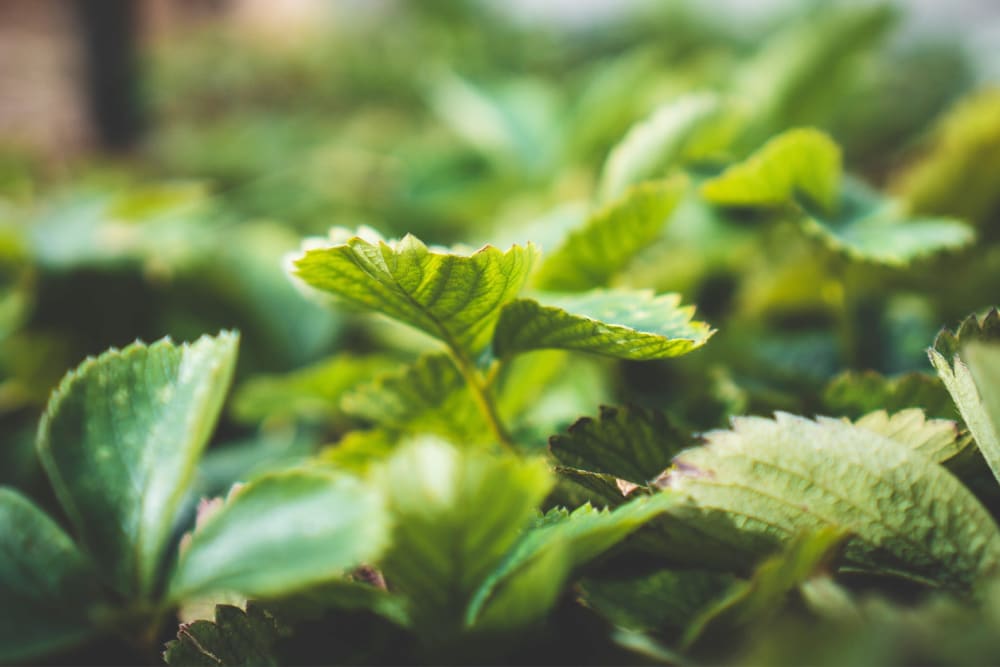How to grow strawberries
Strawberries are eagerly awaited every summer. These juicy fruits are really healthy and super easy to grow in baskets, pots, and sunny gardens.

Nothing else symbolises the British summer like the scrumptious wild strawberry. These sweet, tasty fruits, also known as fragaria vesca, are packed with Vitamin C and antioxidants and taste just as good on their own as they do with a dollop of cream.
Our own fair summer strawberry lady is Scarlett. She's super easy to grow in your outdoor space and thrives with just a little bit of effort. Here's a quick rundown of Scarlett's main needs:
- Plant Scarlett between March and May for the best crop.
- Keep her soil moist, but not soaking wet.
- Let her sunbathe in warm, sheltered sun.
- Feed her fortnightly for a bumper crop.
- Harvest the berries once they're completely red and ripe.
When to plant strawberries
Strawberry plants can be planted as soon as you buy them, but they do best when planted in March, April, or May. Once they’re laden with ripe fruit, they'll keep you supplied with strawberries until late autumn.
They’re perennial plants, which means that they regroup and regrow every year. However, this only lasts for about three or four years before the strawberry plant starts to slow down and give you less fruit.

How to plant strawberries
Strawberry plants are perfectly happy in a wide range of growing locations, from raised beds to hanging baskets and grow bags. They also thrive in well-prepared soil.
Before you get your strawberry plants settled, build up some layers of garden compost in the area where you want to plant them. Then pop them in and make sure that their roots are just below the surface.
You can also grow strawberry plants from seeds. You’ll need to sow them in the autumn so that the seedlings grow enough to be planted in the following spring. They should be sown indoors in seed trays to protect them against the cold weather.
While a strong breeze won't blow strawberry plants over, it will stop their bee buddies from pollinating their flowers. This could hurt their crop, so give them a nice, sheltered space

When to repot strawberries
If strawberry plants are able to stretch their roots, they should give you plenty of strawberries for three to four years. Repot them with some fresh compost each spring to put them in the best shape for the new season.
You can also use existing strawberry plants to grow fresh ones. Once the fruits are finished, put some small nursery pots filled with compost underneath any of a strawberry plant’s long, stringy stems that have a couple of leaves.
Keep these mini-strawberry plants moist and happy until they've put down their own roots, then untangle them from the older plant and place them in a bigger pot. The more strawberries, the merrier!

How to care for strawberries
Strawberry plants like to stay moist, but not drenched, so keep them in well-draining soil and water them often, especially if temperatures get really high.
Strawberries also love to sunbathe, but they'll also do just fine with a bit of dappled shade. If it's too dark though, they won't grow at their best. Spots that are likely to frost in winter should be avoided.
For a big bounty of berries, it's best to give strawberry plants plenty of food. A serving of tomato fertiliser every couple of weeks keeps them growing healthily and happily. Help your developing berries grow faster by pruning away leaves so they can absorb more sunlight.
Dealing with pests and problems
Strawberries taste so good that several common pests just can't wait to have a nibble. Here are a few problems to watch out for:
- Birds, slugs, and snails – These berry burglars can pilfer your fruits, so cover your strawberry plant with a bit of netting or sprinkle some straw around its roots to discourage them.
- Grey mould – This fungus can build up if your strawberry plant gets too wet and can ruin its plump fruits. Make sure there’s a little break in between drinks and avoid getting water on the berries.
- Mildew – If strawberry plants get too dry, it's not good for their leaves because powdery white mildew can appear. Be sure to snip off any powdery leaves right away.

How to harvest strawberries
What's scrumptious, shiny, and red all over? Ripe strawberries of course. Once the fruits are completely red, pluck them off and savour that well-earned sweet treat.
Picked strawberries don't keep well, so you'll get a few days out of them if you pop them in the fridge straight away.
How to use strawberries
You can't go wrong with the traditional tennis treat of strawberries and cream. Take things up a notch and whip up a strawberry Eton mess for an easy summer dessert.
Rewild your inbox
Plant tips. Special offers. No spam.
You might like

How to grow tomatoes
It’s a tasty business

How to grow courgettes
Grow your own courgettes for a colossal crop of tasty veg.

Why is my plant losing its colour?
Leaves looking faded? Let’s fix it